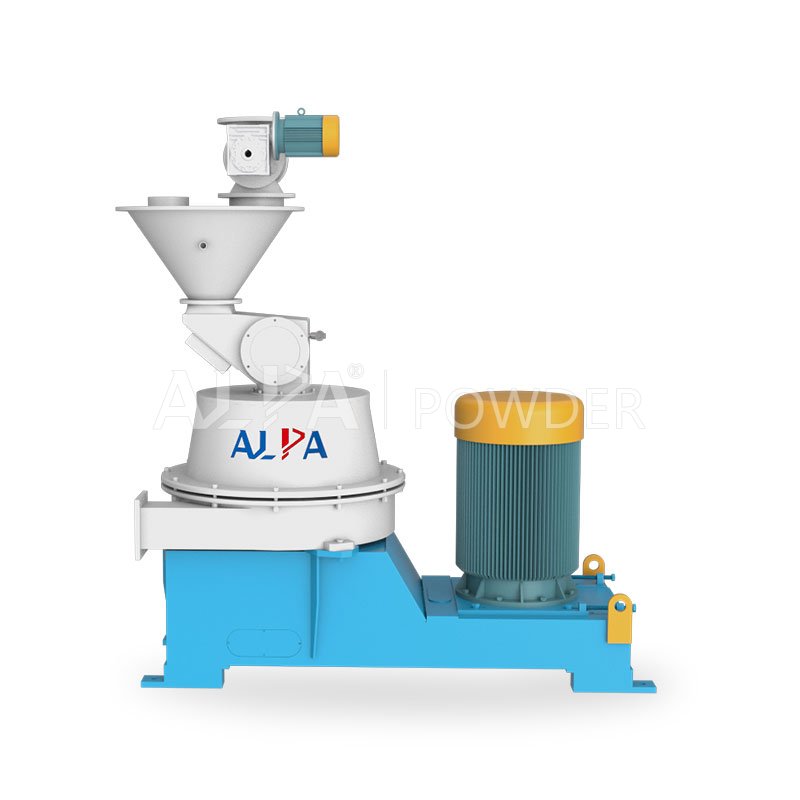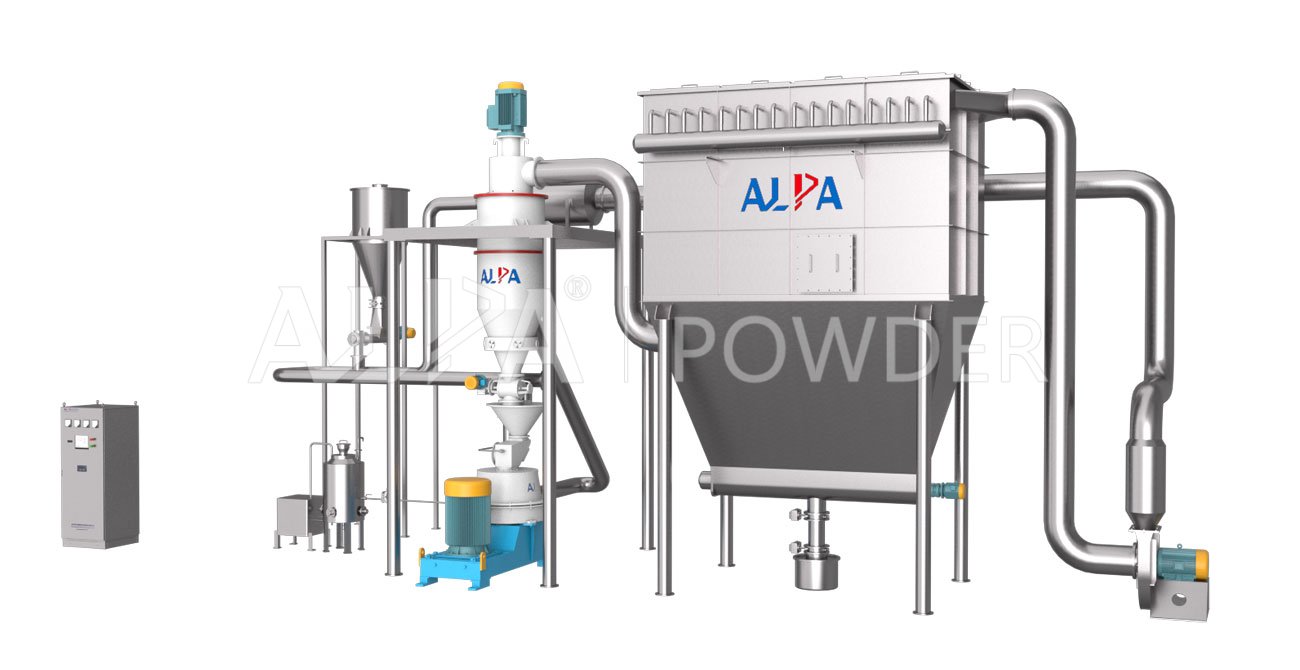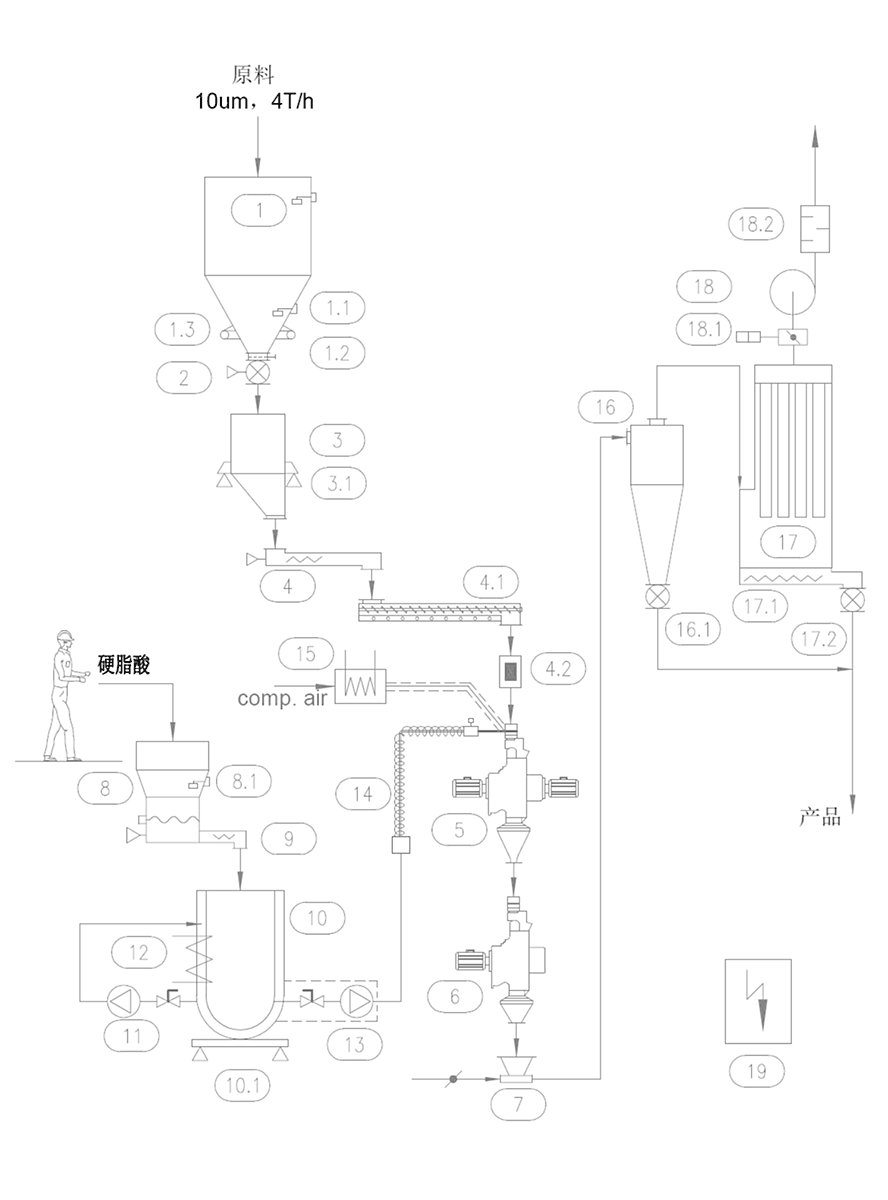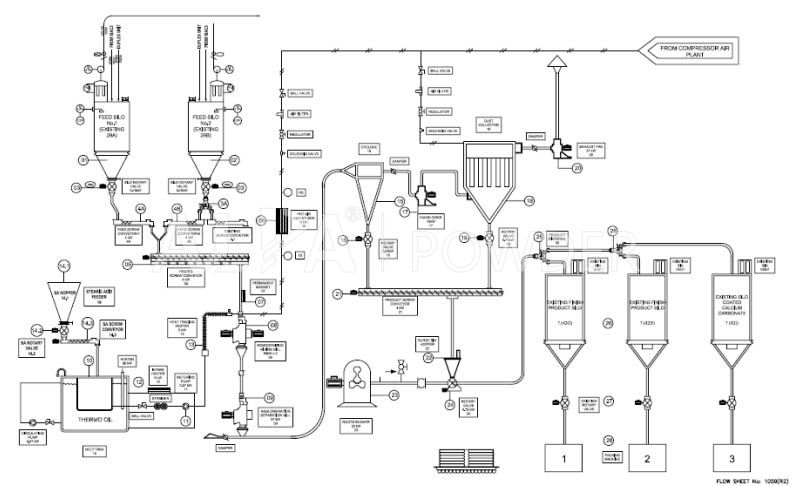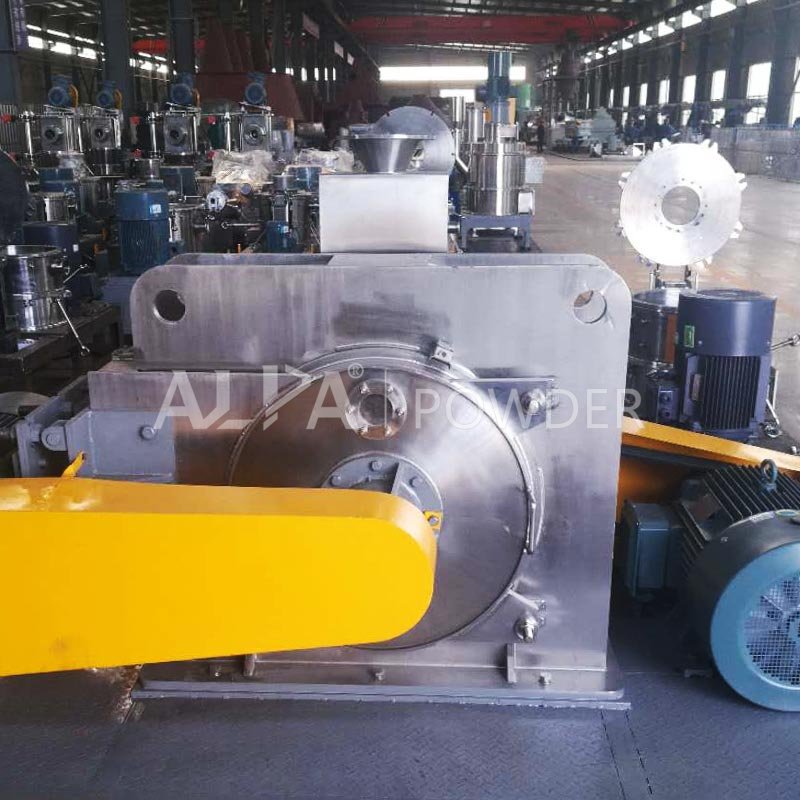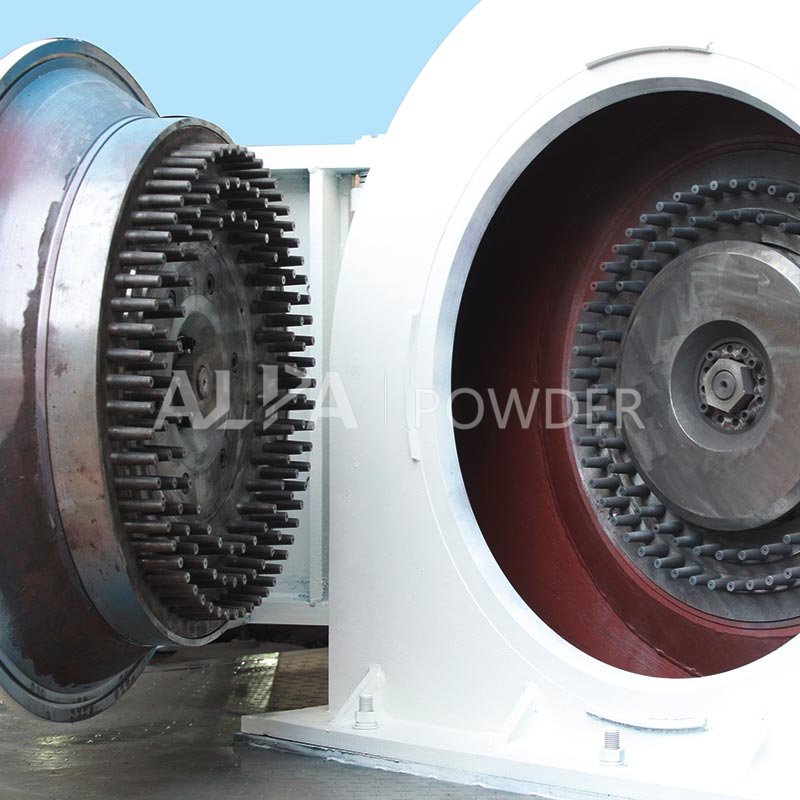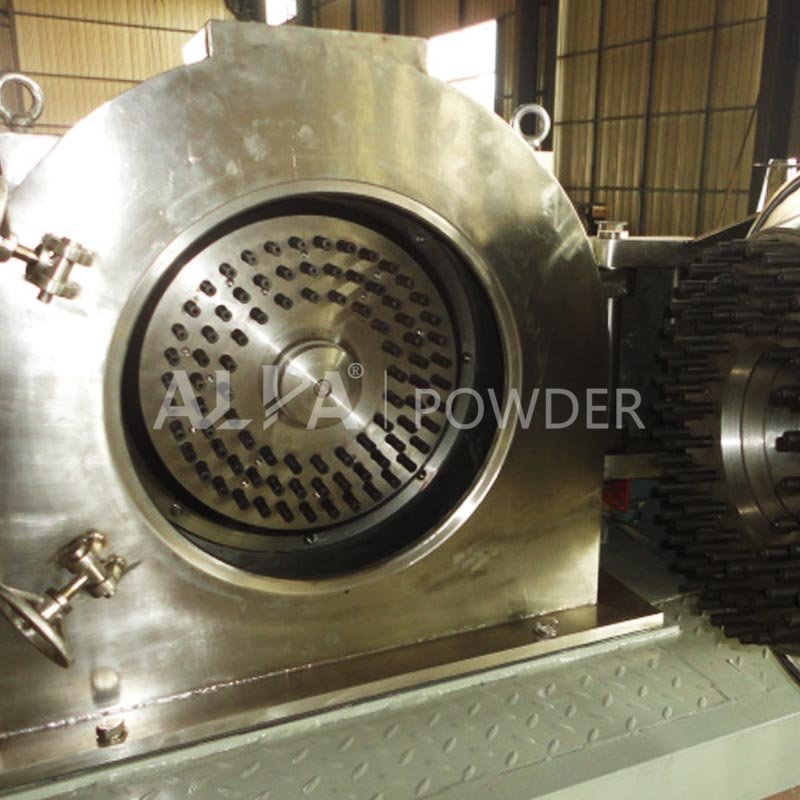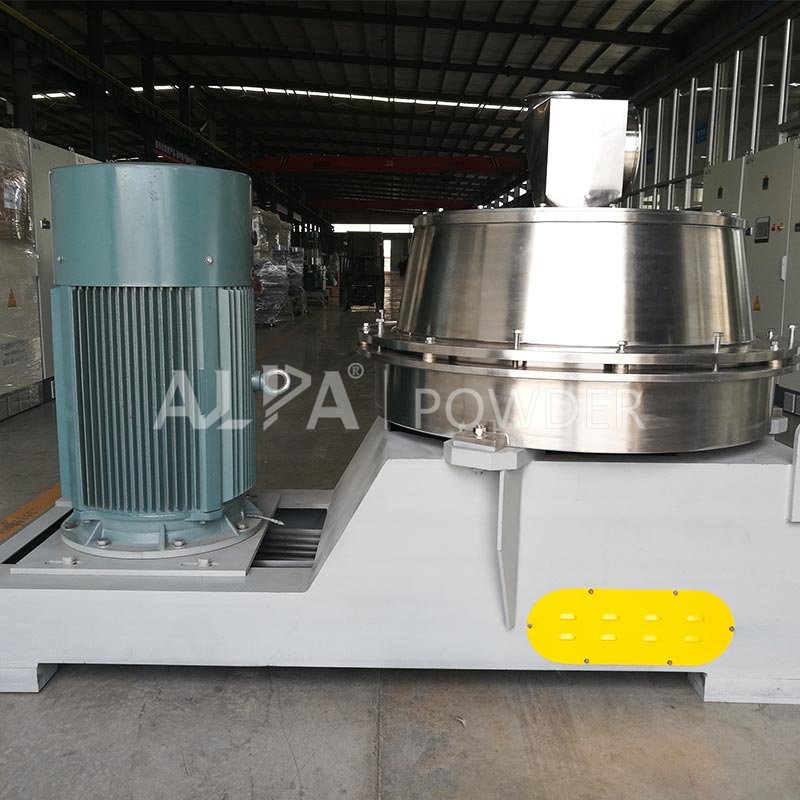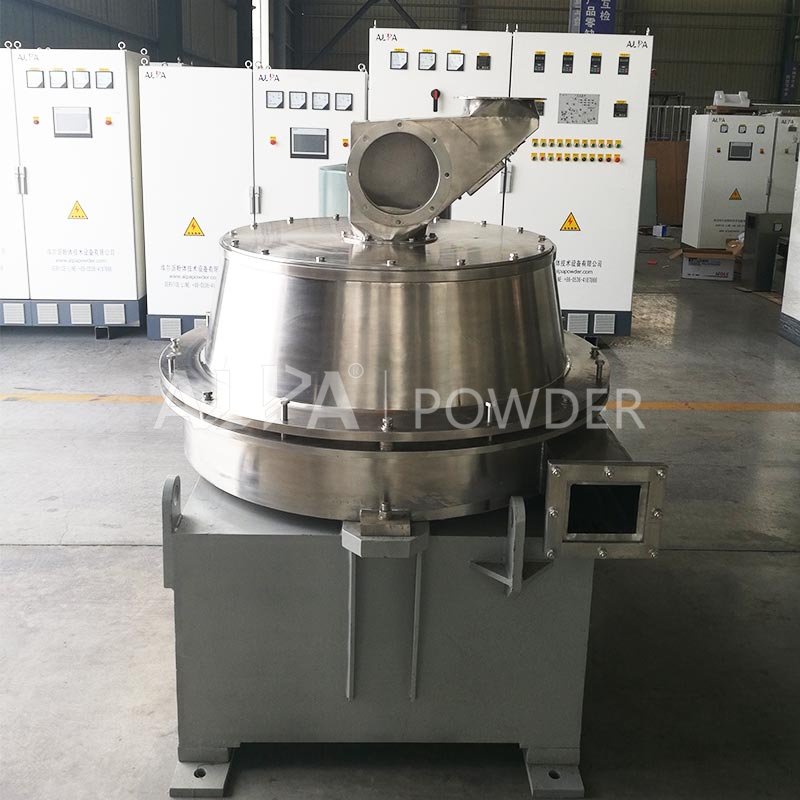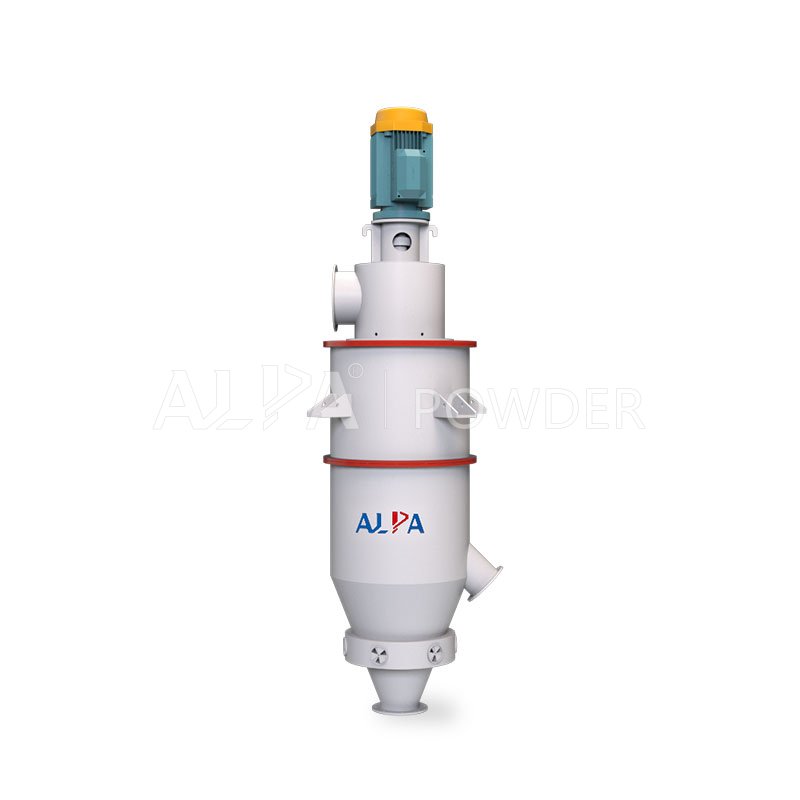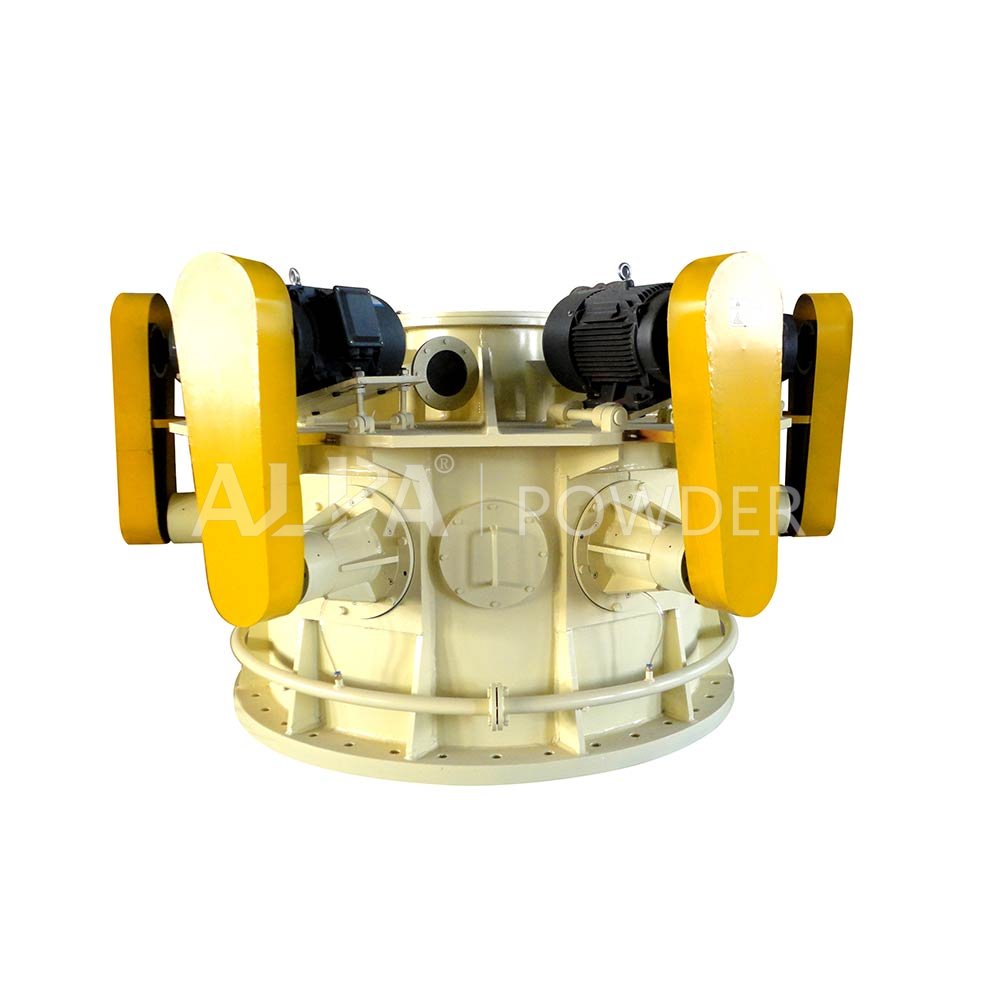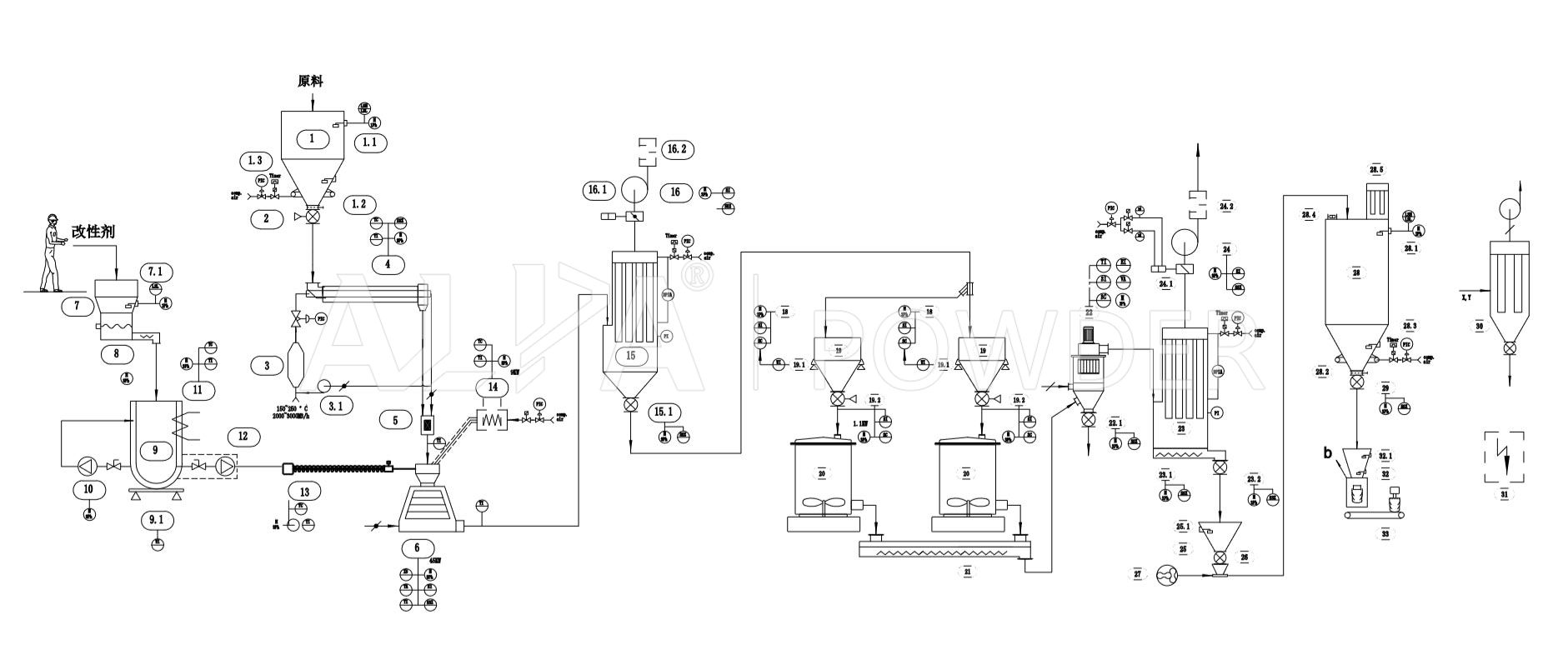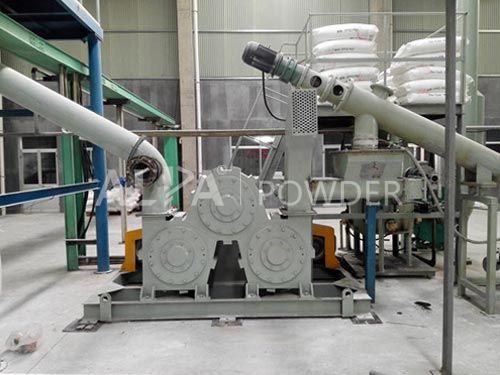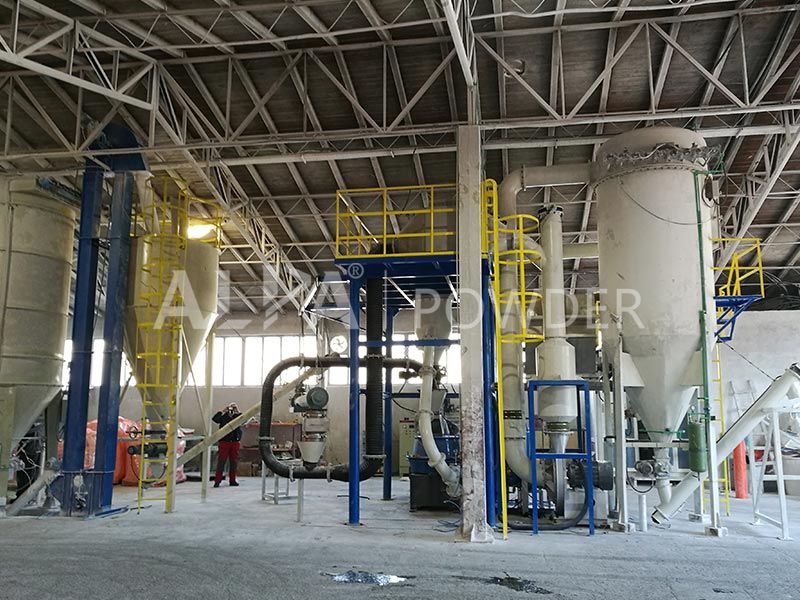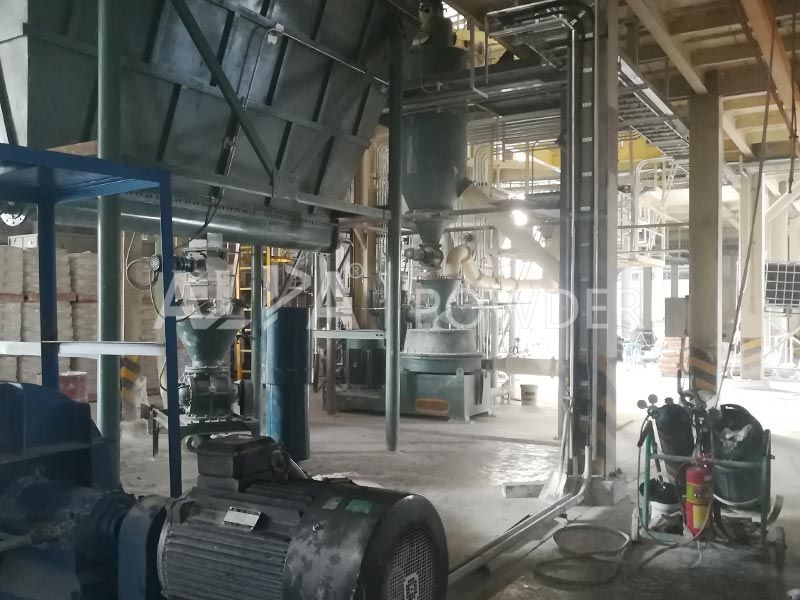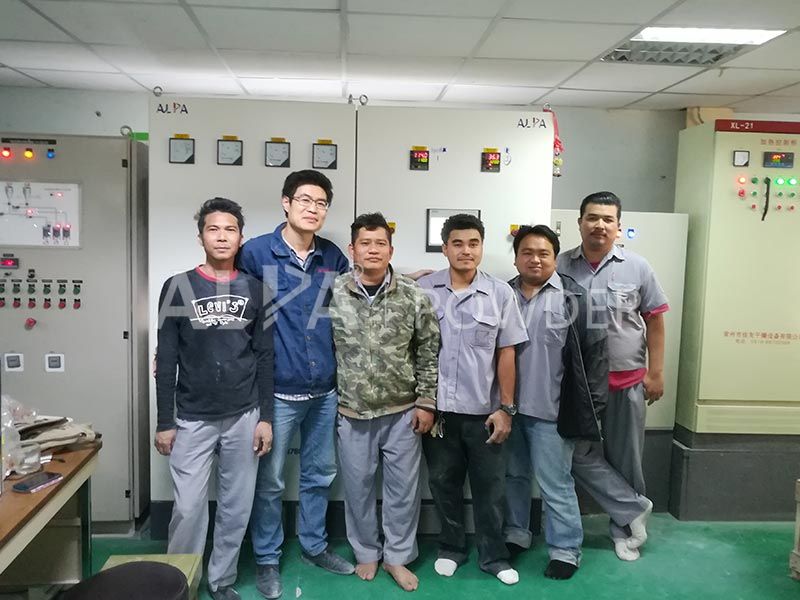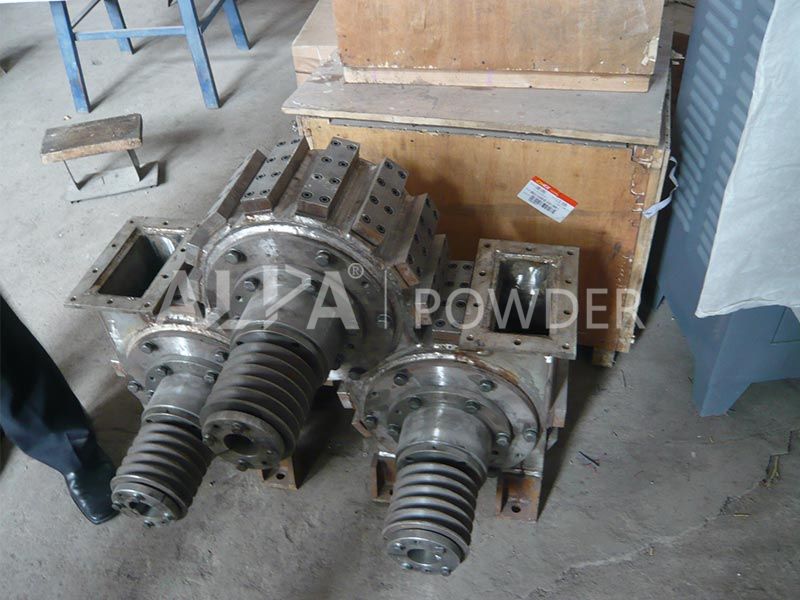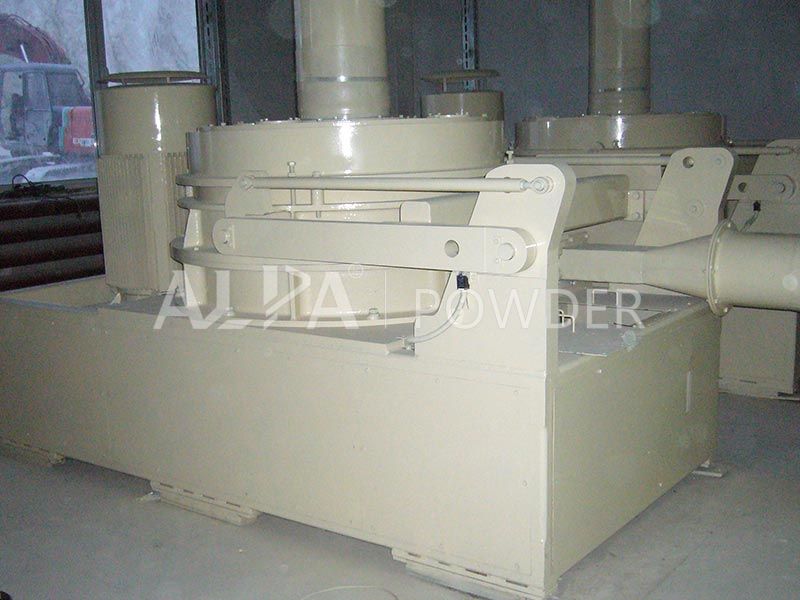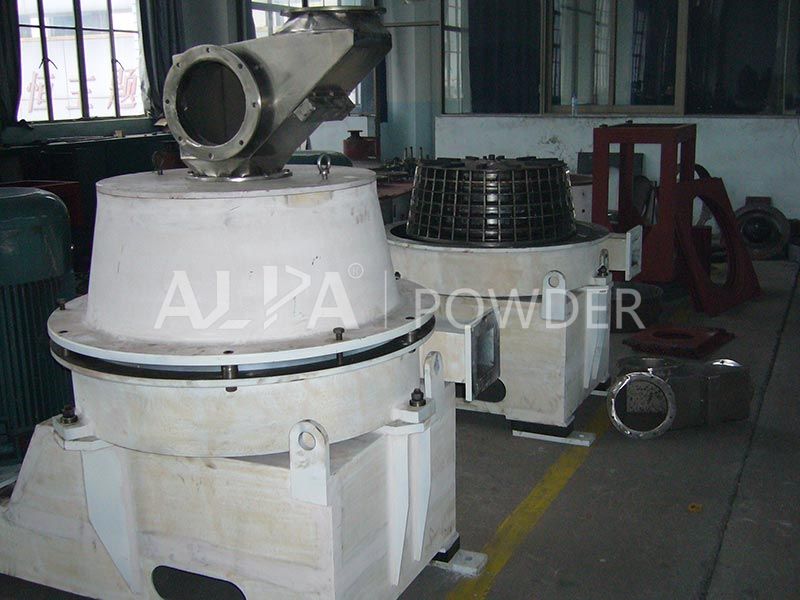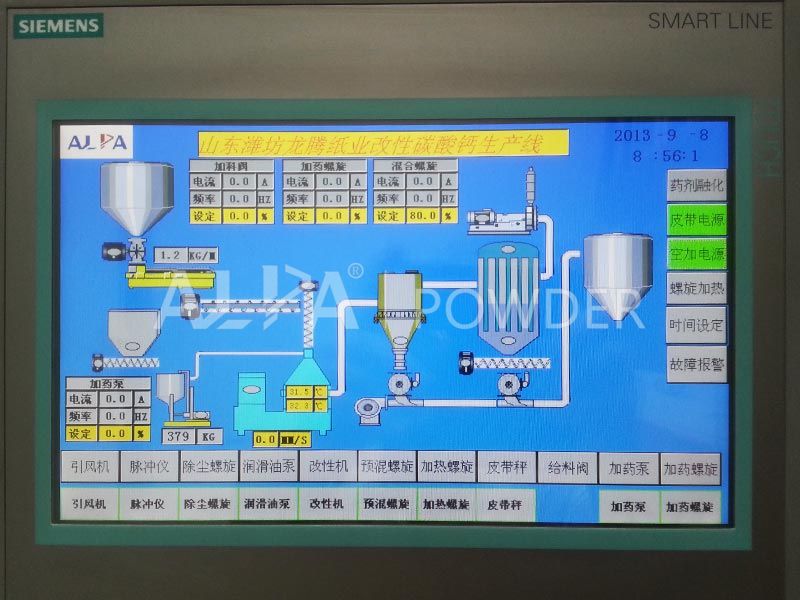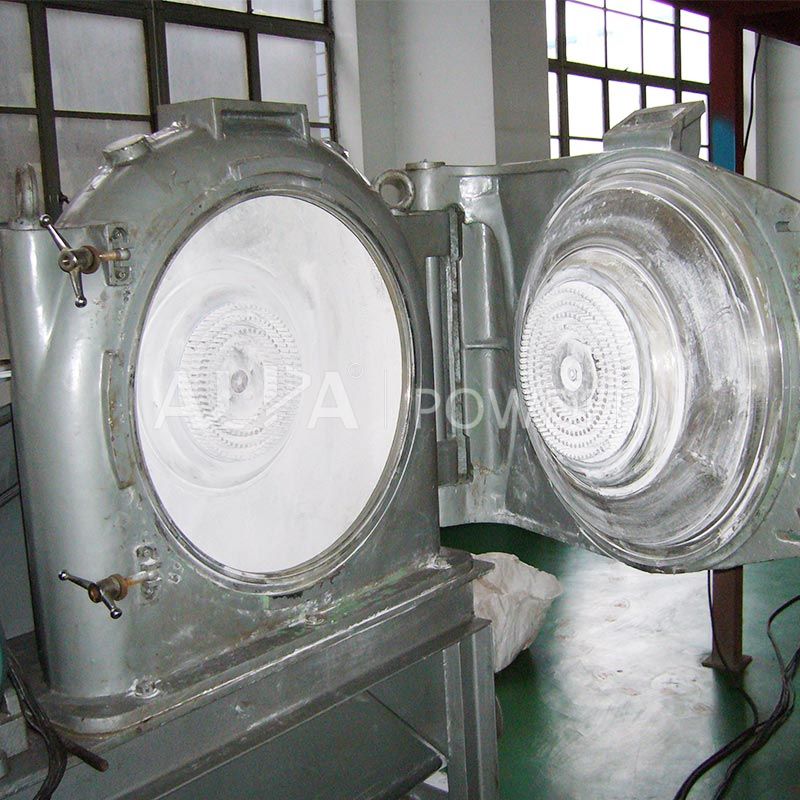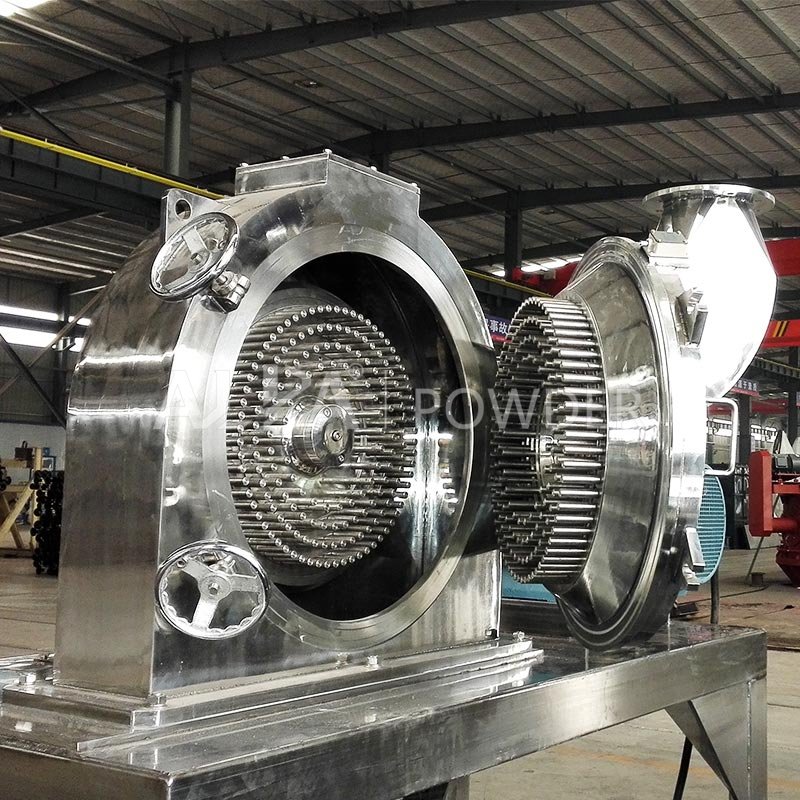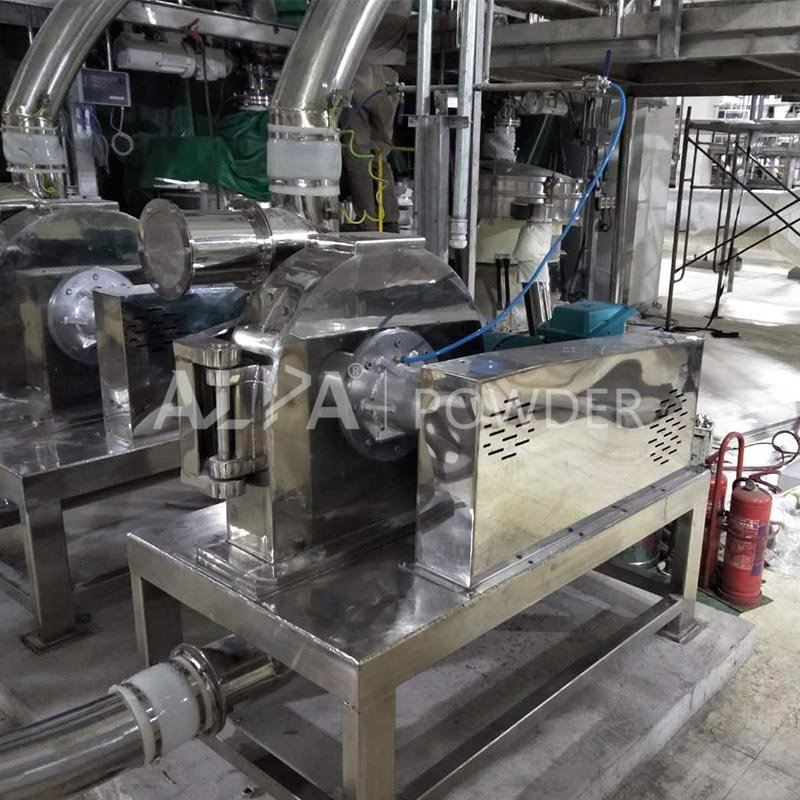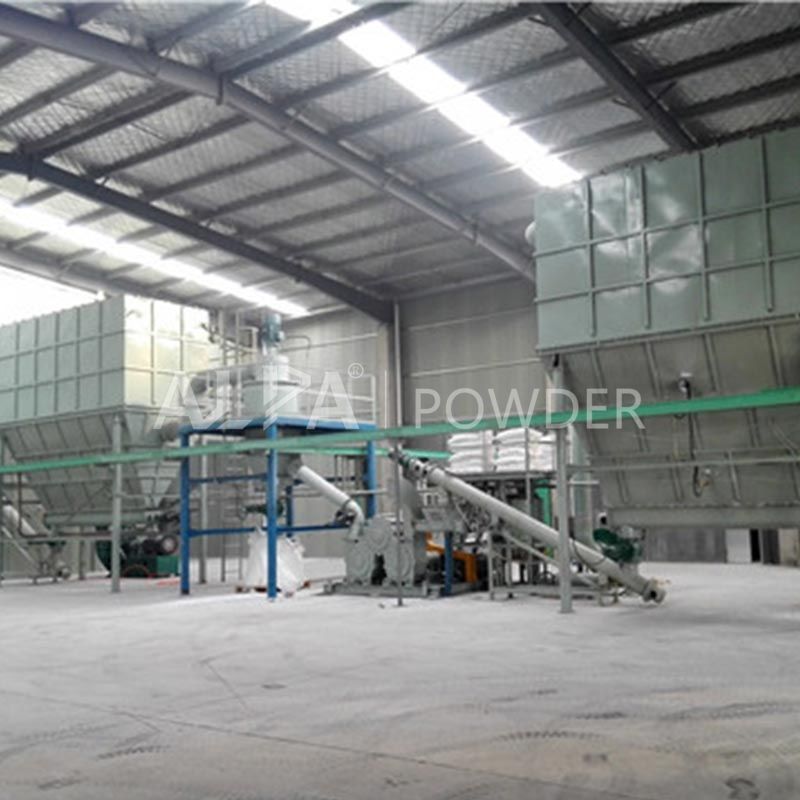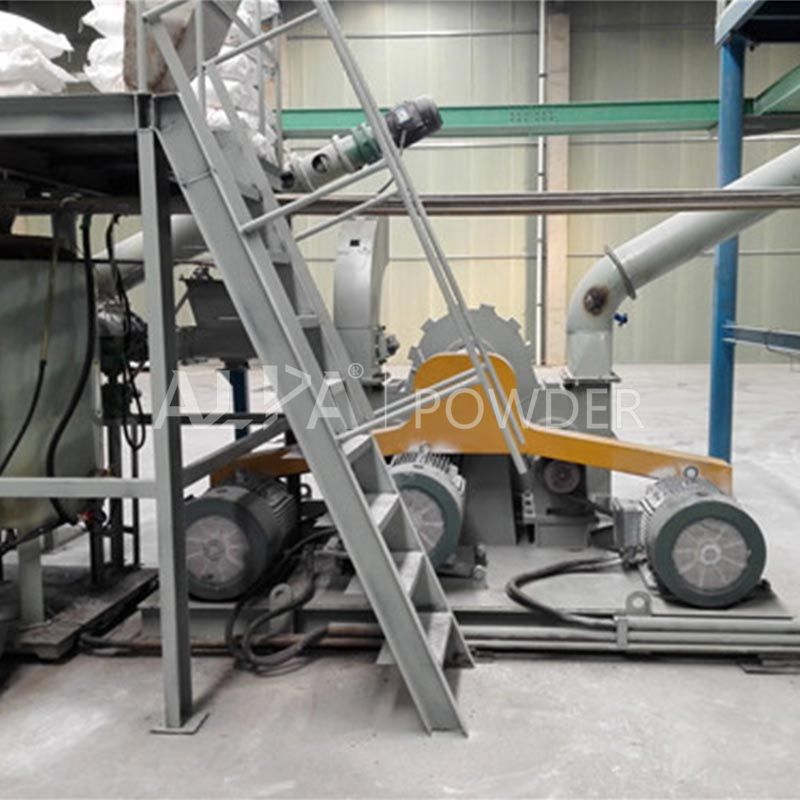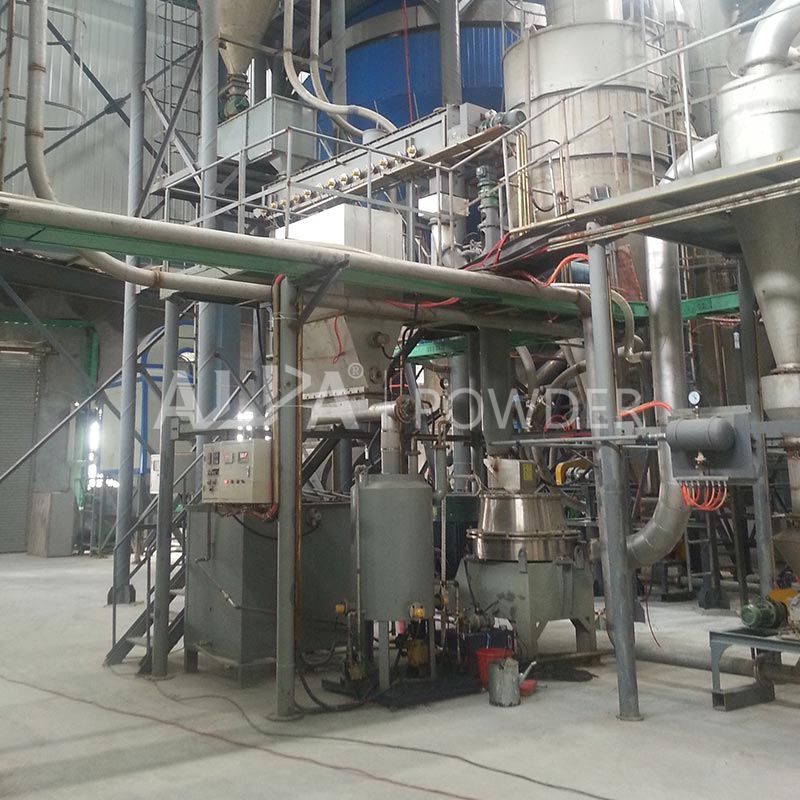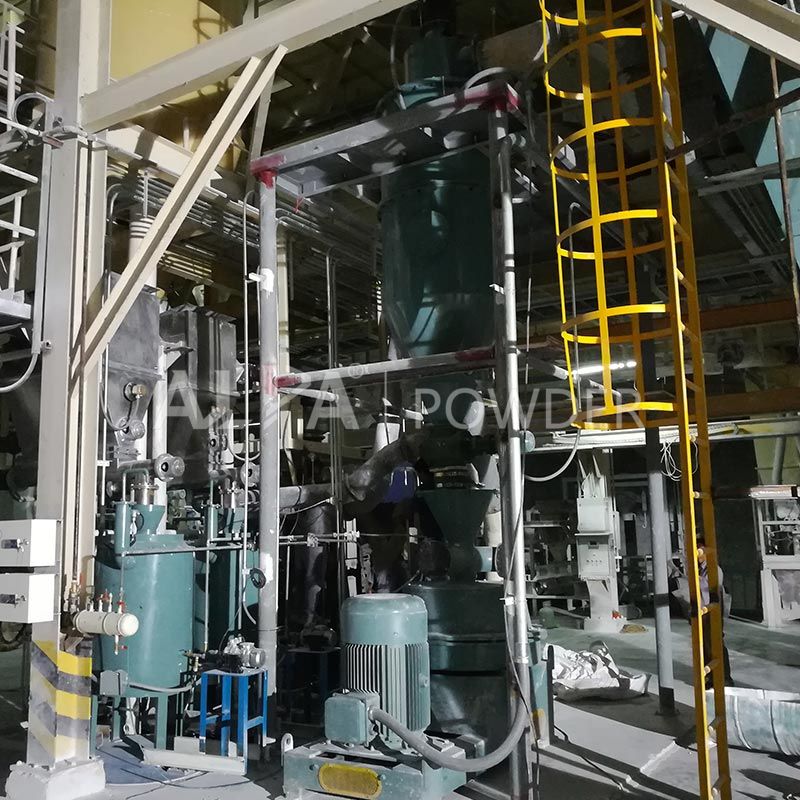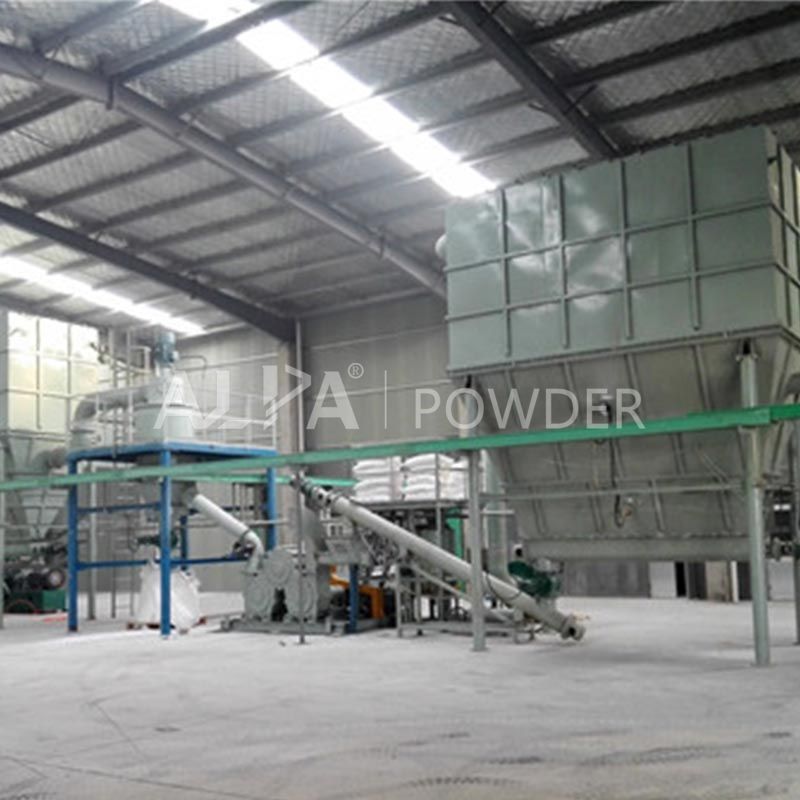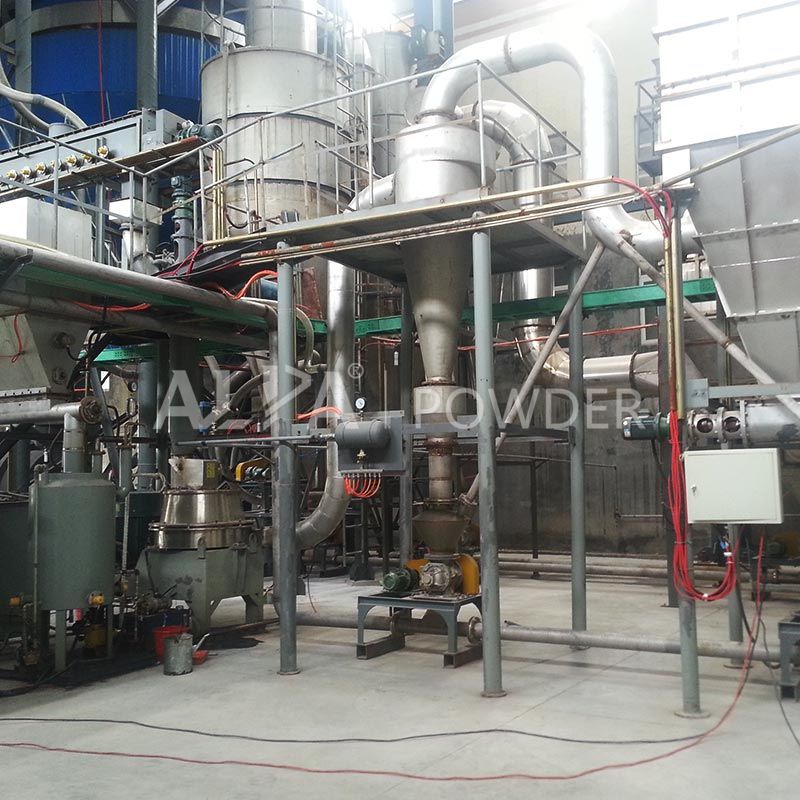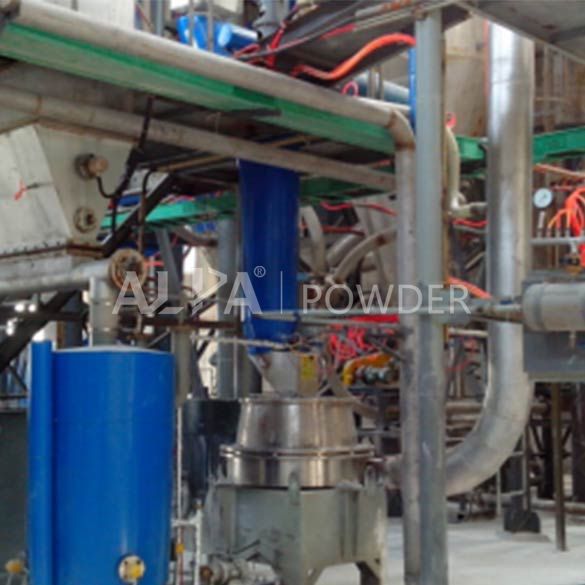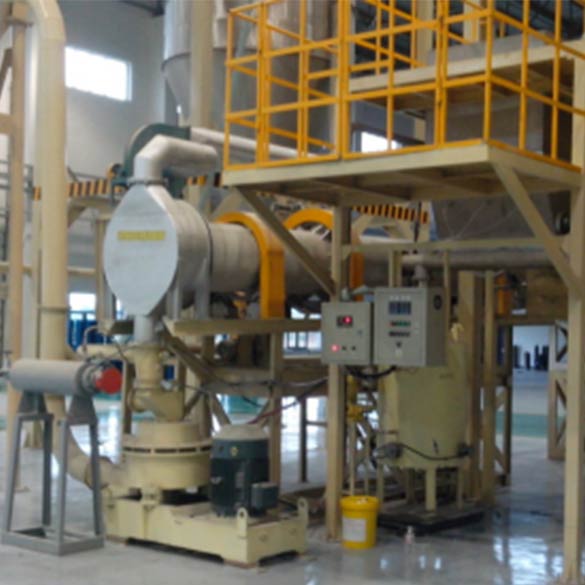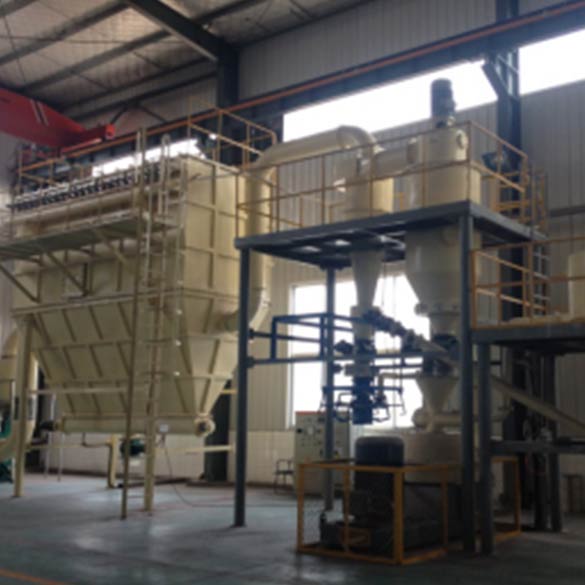powder coating and surface modification production line
The most used coating process by the world’s mineral magnate/ the minimum dosage of modifier / the best coating effect
Powder coating and surface modification production line working principle Video
Applicable:
Widely used in the coating of various materials in the non-metallic mineral industry. Contains: quartz, powder quartz, fused silica, cristobalite, quartzite, vein quartz, quartz sand, feldspar (sodium, potassium), sepiolite, andesite plagioclase, nepheline syenite, garnet, oblique Feldspar, illite, kaolin (calcined kaolin, coal kaolin, washed kaolin), light calcium carbonate, heavy calcium carbonate (calcite, limestone, marble, chalk), talc (white, black), barite, mica (natural, synthetic), bentonite, andalusite, brucite, montmorillonite, graphite, diatomaceous earth, bauxite, petroleum coke, coal powder, magnesite, perlite, attapulgite, spinel, Tourmaline, medical stone, monazite, pyrophyllite, dolomite, rectorite, diopside, translucent stone, porphyrite, cordierite, vermiculite, mullite, clay, clay and other minerals.
Unique Advantages
Wide Range of Applications
The ideal coating effect can be achieved for various inorganic mineral powders.
High Coating Efficiency
The highest cladding ratio or coating effect is achieved with minimal coating material or cost.
High Automation
The entire system is easy to operate, high efficiency and low cost.
Flexible Production Process
According to material characteristics and customer request, a continuous production process or a batch production process can be selected.
Rich equipment selection
Has variety of options for different processes.
Customizable Solution
Provide technical consultation and personalized solutions for coating process according to material characteristics and product use.
Surface coating mechanism and process requirements
Coating mechanism
- The basic principle of coating: obtain the highest coating rate or coating effect with the minimum coating material or cost;
- Surface coating of mineral fillers, the main functions include dispersion, viscosity reduction, filling, and interface mechanics;
- The most commonly used coating methods are: surface chemical coating method, coated coating method, mechanical force chemical coating method;
- The coating methods mainly include: coating mechanism, modifier, coating process and equipment, process control, product testing and evaluation;
- If the purpose, method and modifier of the coating are different, the process and equipment are also different.
Basic Process Requirements
- The modifier uses dilution, emulsification, spray addition and other measures to improve the dispersion, preferably continuous spray or drip with the continuous feeding of the powder;
- Precision metering and uniform feeding of modifier and materials to ensure the instantaneous precision of the ratio of the two, to achieve uniform and firm coating of the modifier on the surface of the powder, good controllability and stable product quality;
- The regulation of the temperature and time of the system should meet the requirements of the coating mechanism or the modifier on the process conditions, and ensure the sufficiency of the coating reaction;
- the equipment operating conditions are good;
- The use of auxiliary equipment (deagglomerator or classifier), environmental factors (temperature, humidity), etc.
Continuous coating process
A.”Double-power Pin disc grinding + deagglomerator machine” continuous coating process
Commonly used classic crafts by european and American well-known mineral companies.
Technical Parameter
| Model / Production Capacity / Particle Size | CUM-P200 | CUM-P400 | CUM-P630 | CUM-P800 |
|---|---|---|---|---|
| D97:5um | 300kg/h | 700kg/h | 1800kg/h | 3000kg/h |
| D97:10um | 500kg/h | 1300kg/h | 3300kg/h | 5800kg/h |
| D97:15um | 600kg/h | 1600kg/h | 4000kg/h | 7200kg/h |
Note: The above data is exemplified by the coating of calcium carbonate GCC.
Major Equipment
B. Three-roller Mill continuous coating process
Standard process commonly used by Chinese mineral companies
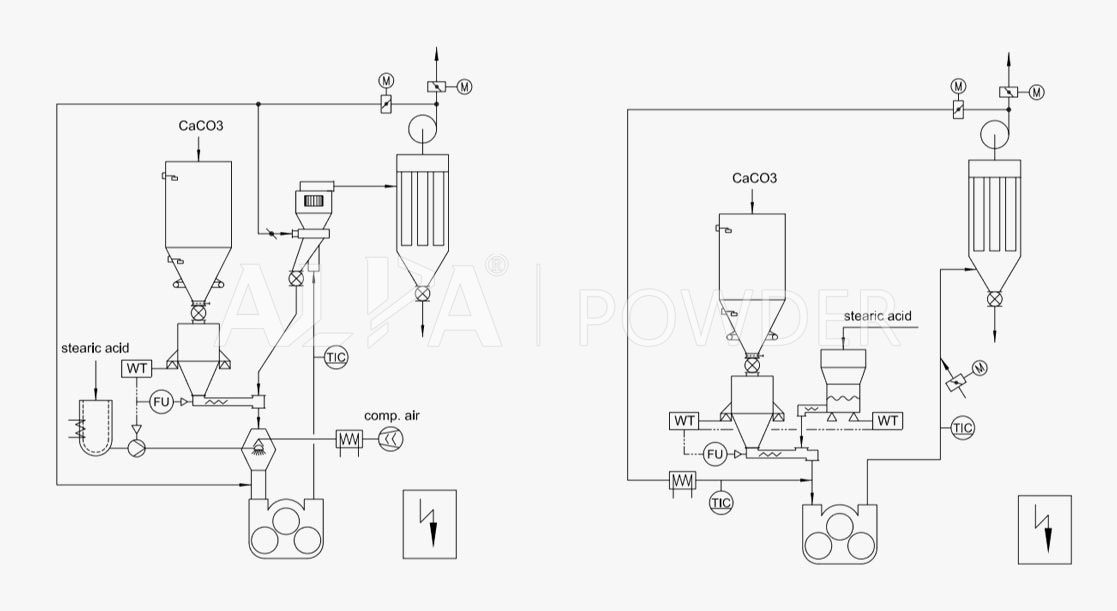
Technical Parameter
| Model | SG200 | SG3/300 | SG3/600 | SG3/900 |
|---|---|---|---|---|
| Production Capacity (D97:10um) | 150kg/h | 1.5T/h | 3T/h | 6T/h |
| Power | 11kw | 55.5kw | 111kw | 225kw |
Note: The above data is exemplified by the coating of calcium carbonate GCC.
Major Equipment
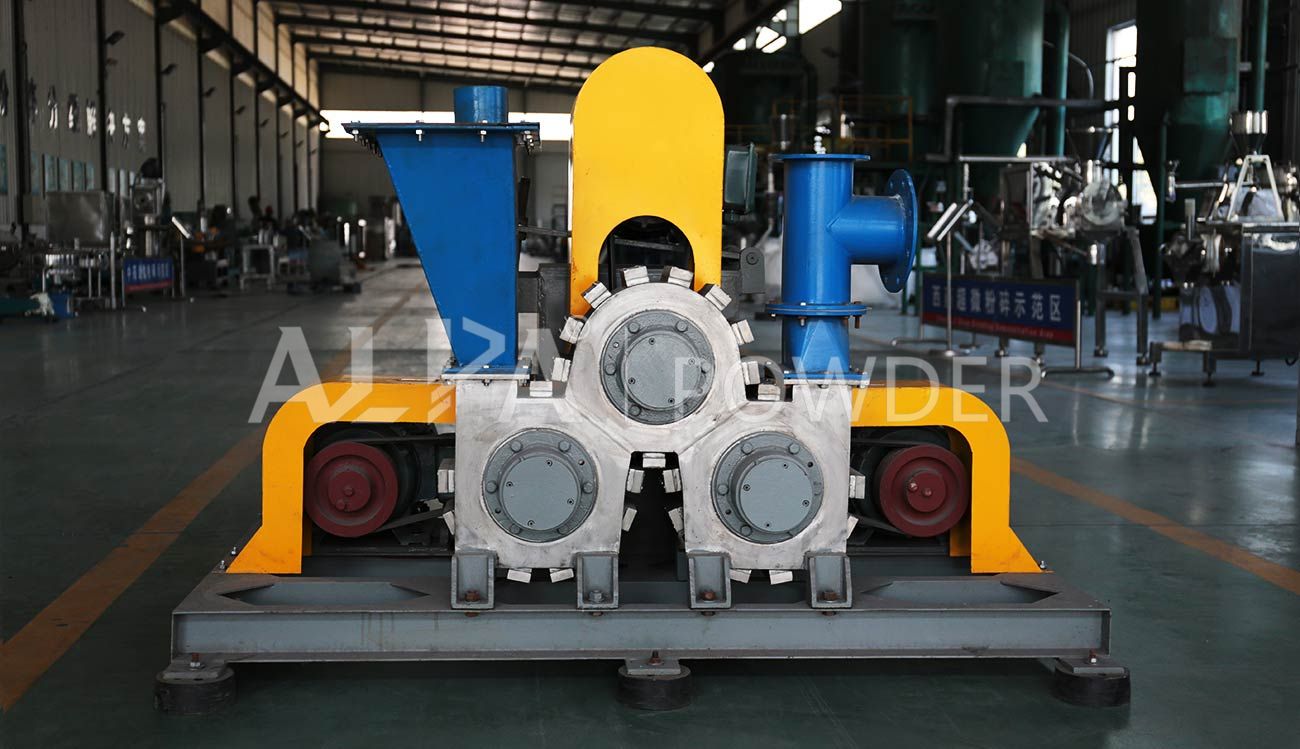
SG series three-roller Mill continuous coating machine
Advantages: mature technology, low investment, suitable for coating of stearic acid; self-friction heat generation, less auxiliary equipment; suitable for coating of 325~1250 mesh powder.
C.Turbo Mill (tower mill) continuous coating process
Simple process commonly used by Chinese mineral companies
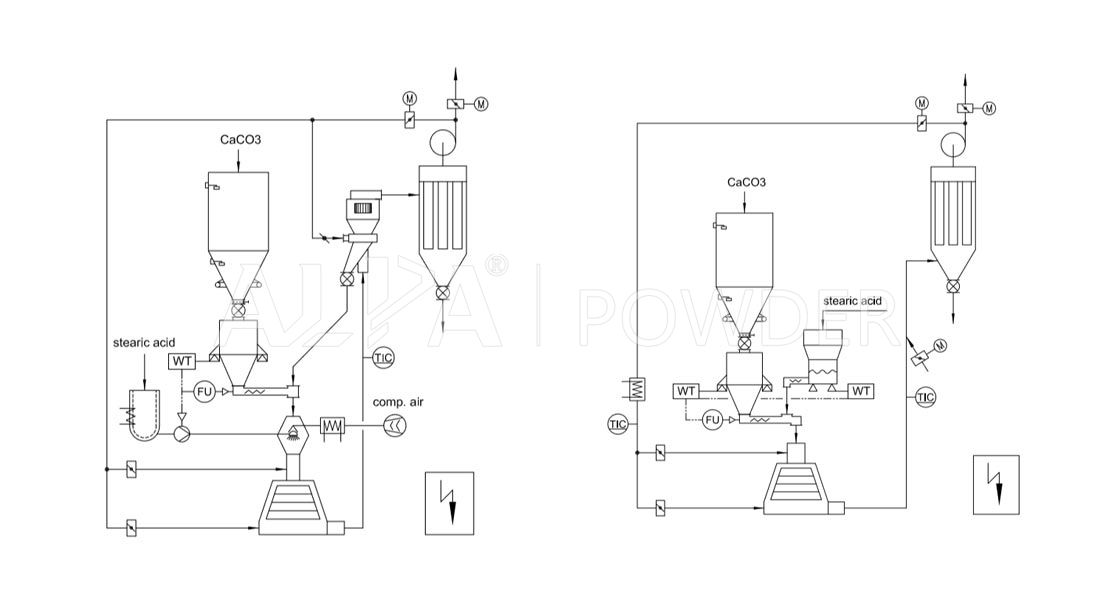
Technical Parameter
| Model | RTM-300 | RTM-400 | RTM-500 | RTM-750 | RTM-1000 |
|---|---|---|---|---|---|
| Particle Size | D97:10um | D97:10um | D97:10um | D97:10um | D97:10um |
| Production Capacity | 500Kg/h | 900Kg/h | 1500Kg/h | 2000-2500Kg/h | 4000Kg/h |
| Power | 22kw | 37kw | 45kw | 75kw | 110kw |
Major Equipment
Batch coating process
Intermittent coating process of “High-speed Blender + Classifier / Disperser”
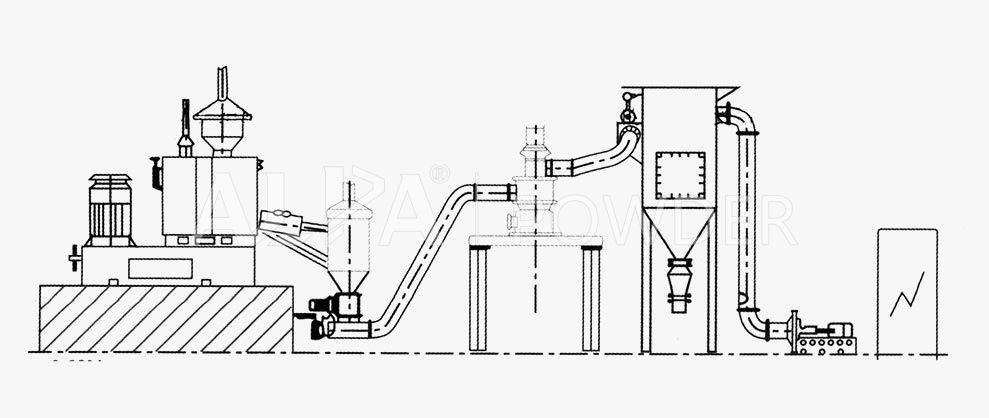
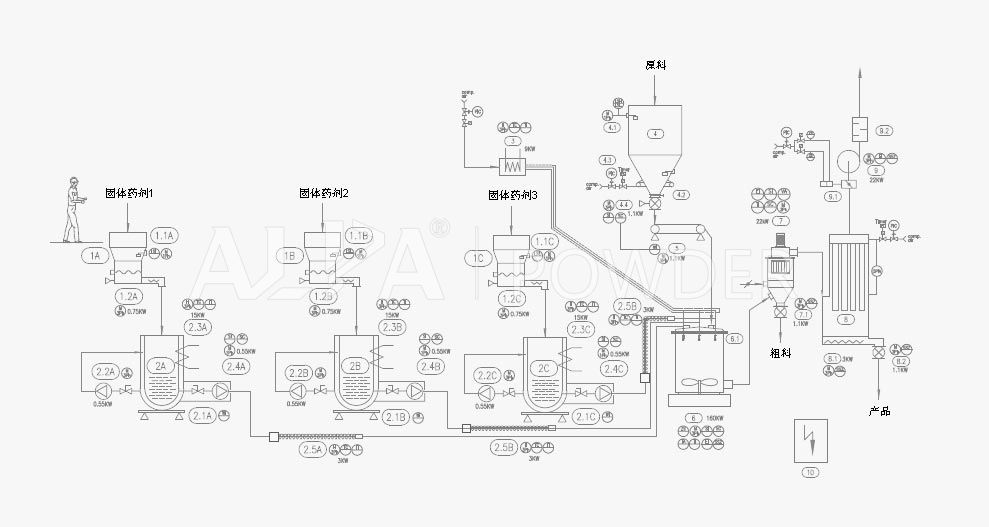
Major equipment
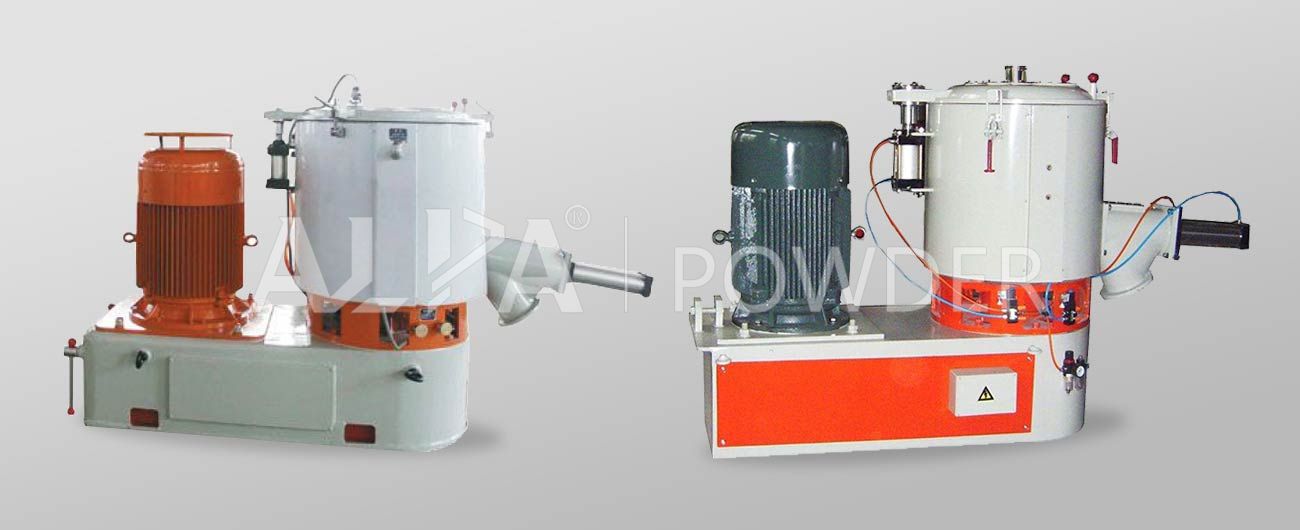
High-speed Blender
Advantages: Intermittent operation; coating time and temperature adjustability; good adaptability to different modifiers and formula; very suitable for surface chemical coating of small and medium batch powders.
Compound coating process
Major equipment
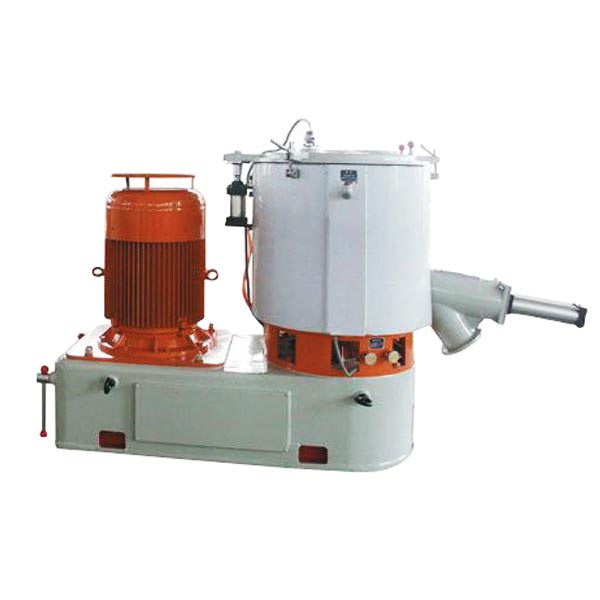
High-speed Blender
Intermittent operation; coating time and temperature adjustability; good adaptability to different modifiers and formula; very suitable for surface chemical coating of small and medium batch powders.
Coating production line case collection
Service and Support
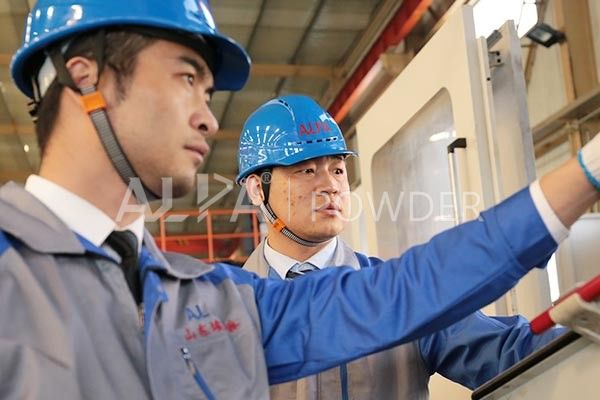
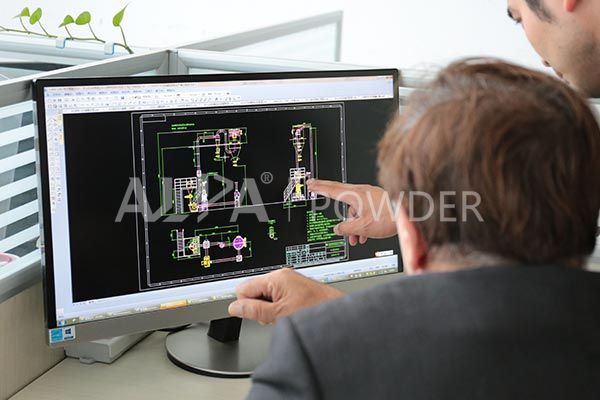
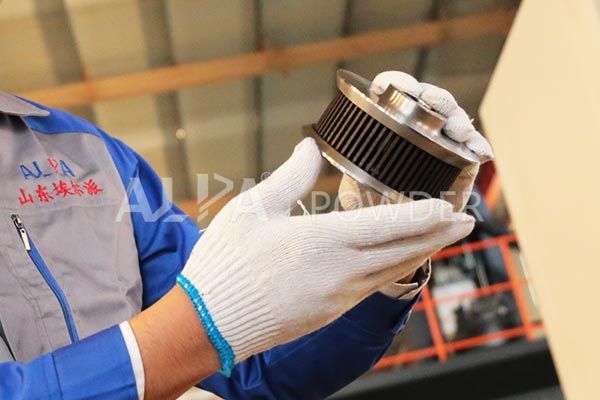
Quality Management
ALPA’s quality assurance goal is to pursue the zero defects of all manufactured ultrafine powder equipment, actively implement Six Sigma quality management, and continuously improve process control management capabilities through advanced statistical analysis to ensure products and services are satisfied for customers.
